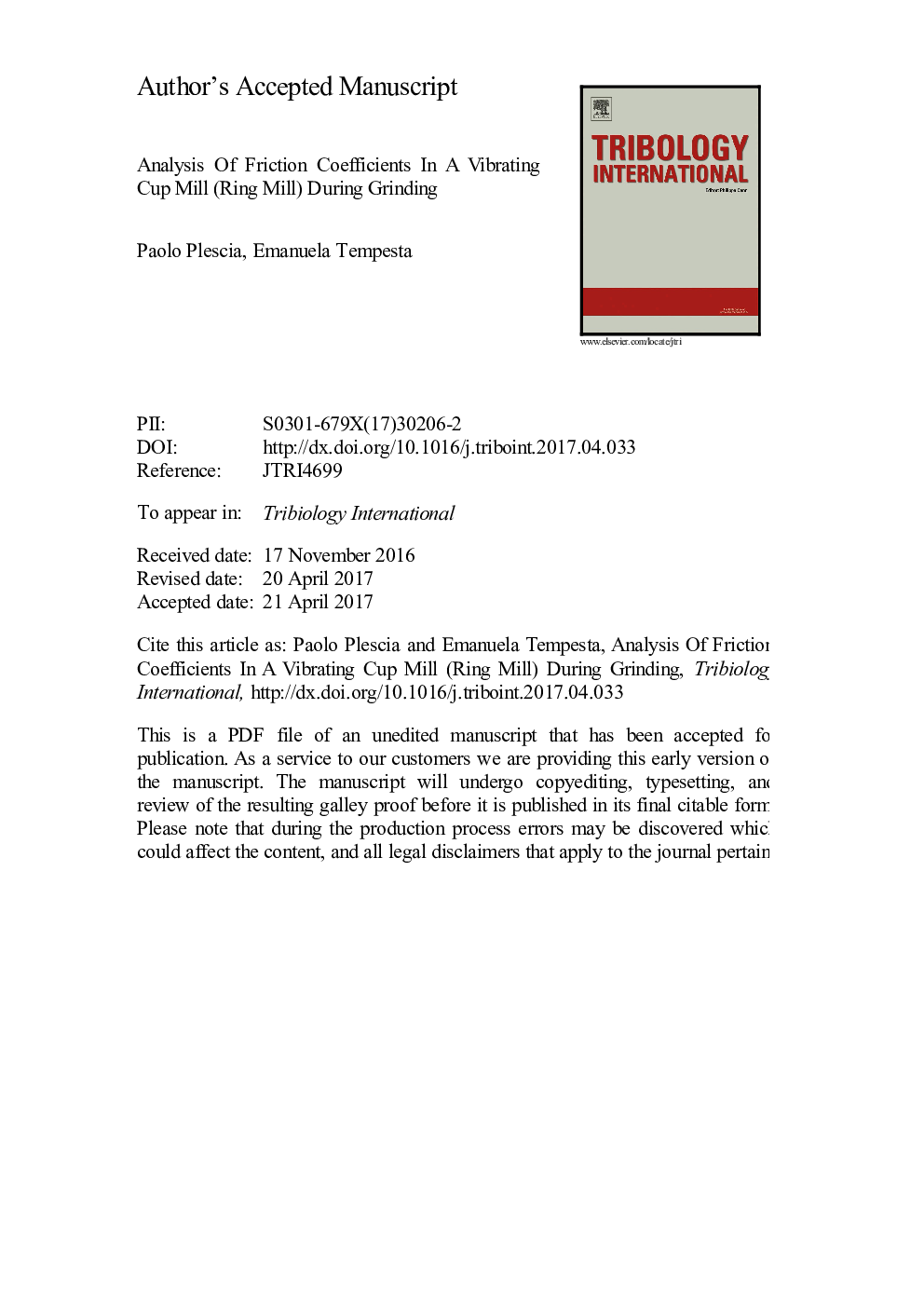| کد مقاله | کد نشریه | سال انتشار | مقاله انگلیسی | نسخه تمام متن |
|---|---|---|---|---|
| 4986018 | 1454792 | 2017 | 28 صفحه PDF | دانلود رایگان |
عنوان انگلیسی مقاله ISI
Analysis of friction coefficients in a vibrating cup mill (ring mill) during grinding
ترجمه فارسی عنوان
تجزیه و تحلیل ضریب اصطکاک در یک آسیاب فریزر ارتعاشی (حلقه آسیاب) در خرد کردن
دانلود مقاله + سفارش ترجمه
دانلود مقاله ISI انگلیسی
رایگان برای ایرانیان
کلمات کلیدی
اصطکاک، اندازه گیری، گرمای اصطکاک تریبوشیمی،
ترجمه چکیده
این کار نشان می دهد که چگونه یک آسیاب حلقه به عنوان یک سیستم تجزیه و تحلیل ضریب اصطکاک برای مواد دانه ای در طول سنگ زنی استفاده می شود. این روش ارزیابی عمدتا برای تجزیه و تحلیل مصرف انرژی در فرایندهای خرد کردن در کارخانه های اصطکاک ساخته شده است. کارخانه حلقه شامل یک مخزن استوانه ای حاوی توده های سنگزنی به عنوان سیلندرهای کواکسیال و حلقه ها، ساخته شده از مواد با مقاومت بالا، توسط یک حرکت نوسان ناشی از توده های غول پیکر مرتب شده بر روی محور موتور میچرخد. در داخل شیشه، توده های چرخش توسط نوسانات غیر عادی جار چرخش آزادانه، با سرعت که به اصطکاک بین اجسام آسیاب و سطوح داخلی شیشه بستگی دارد. کار بررسی چگونگی چرخش توده سنگ زنی، مکانیسم ایجاد اتصال و روابط بین این حرکات و ضریب اصطکاک. با استفاده از این مدل، ممکن است اندازه گیری انرژی آسیاب شده فورا توسط فوری و انرژی از دست رفته از طریق گرما و فشار متوسط ایجاد شده توسط رانش توده های سنگ زنی؛ و، در نهایت، ضریب اصطکاک بین جرم و مواد قرار داده شده.
موضوعات مرتبط
مهندسی و علوم پایه
مهندسی شیمی
شیمی کلوئیدی و سطحی
چکیده انگلیسی
This work describes how a ring mill is used as a friction coefficient analysis system for granular materials during grinding. This assessment method was mainly created to analyse energy consumption in comminution processes in friction mills. A ring mills consists of a cylindrical jar containing the grinding masses as coaxial cylinders and rings, made from high strength materials, moved by an oscillating movement caused by eccentric masses arranged on the mill motor axis. Inside the jar the masses rotated by the jar's eccentric oscillation rotate freely, at a speed that depends on the friction between the grinding bodies and the jar's inner surfaces. The work checked how the grinding masses rotate, the mechanism causing coupling and the relations between these movements and the friction coefficient. With this model it is possible to measure grinding energy consumed instant by instant and the energy lost through heat and average pressure generated by the thrust of the grinding masses; and, lastly, the friction coefficient between the mass and the material interposed.
ناشر
Database: Elsevier - ScienceDirect (ساینس دایرکت)
Journal: Tribology International - Volume 114, October 2017, Pages 458-468
Journal: Tribology International - Volume 114, October 2017, Pages 458-468
نویسندگان
Paolo Plescia, Emanuela Tempesta,
